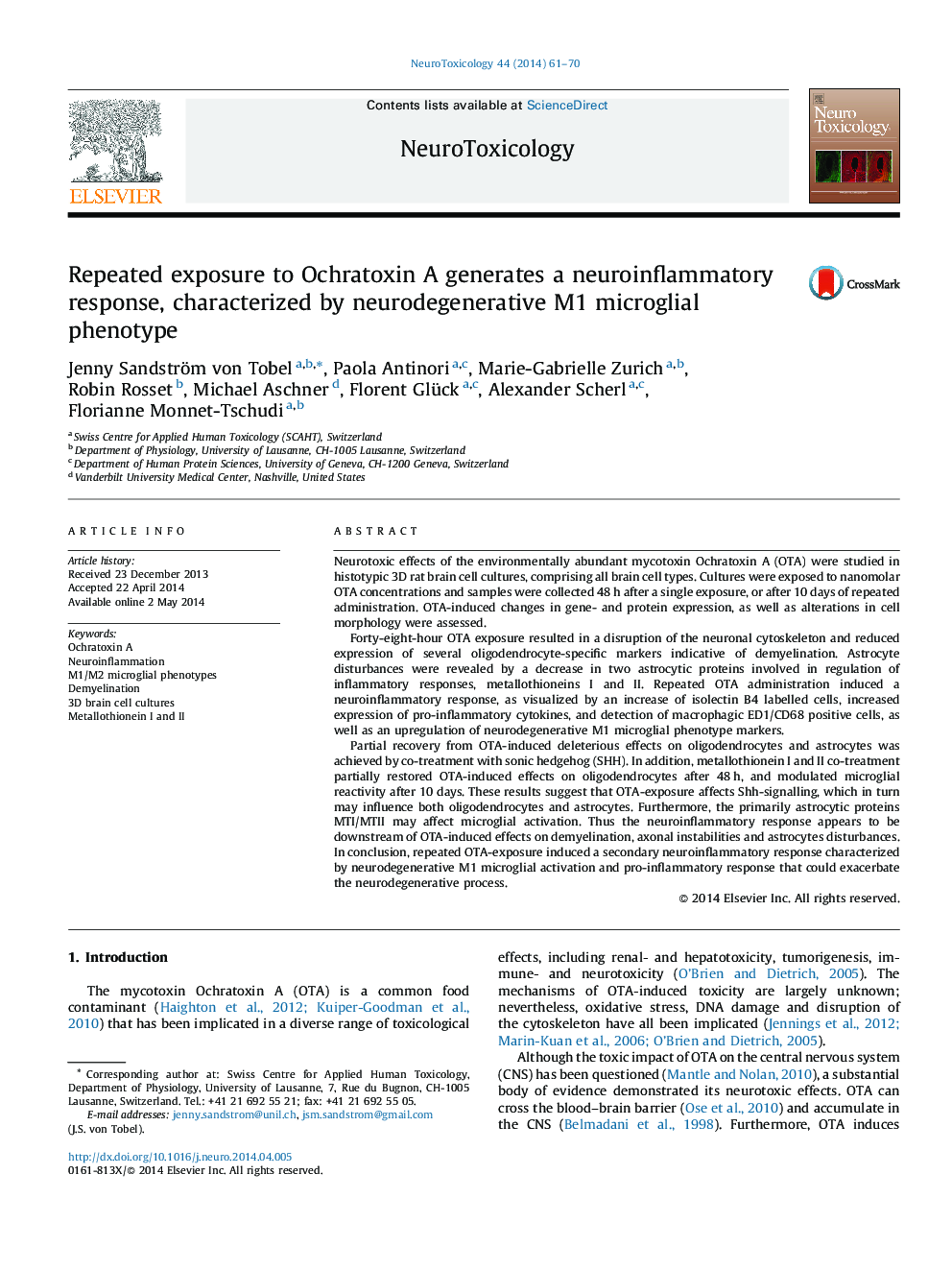| Article ID | Journal | Published Year | Pages | File Type |
|---|---|---|---|---|
| 2589660 | NeuroToxicology | 2014 | 10 Pages |
•Neurotoxic effects of Ochratoxin A (OTA) were examined in 3D aggregating rat brain cells.•Acute OTA exposure induced neurocytoskeletal instabilities and demyelination.•Acute OTA exposure interfered with normal astrocyte properties.•Repeated OTA exposure induced microgliosis of neurodegenerative M1 phenotype.
Neurotoxic effects of the environmentally abundant mycotoxin Ochratoxin A (OTA) were studied in histotypic 3D rat brain cell cultures, comprising all brain cell types. Cultures were exposed to nanomolar OTA concentrations and samples were collected 48 h after a single exposure, or after 10 days of repeated administration. OTA-induced changes in gene- and protein expression, as well as alterations in cell morphology were assessed.Forty-eight-hour OTA exposure resulted in a disruption of the neuronal cytoskeleton and reduced expression of several oligodendrocyte-specific markers indicative of demyelination. Astrocyte disturbances were revealed by a decrease in two astrocytic proteins involved in regulation of inflammatory responses, metallothioneins I and II. Repeated OTA administration induced a neuroinflammatory response, as visualized by an increase of isolectin B4 labelled cells, increased expression of pro-inflammatory cytokines, and detection of macrophagic ED1/CD68 positive cells, as well as an upregulation of neurodegenerative M1 microglial phenotype markers.Partial recovery from OTA-induced deleterious effects on oligodendrocytes and astrocytes was achieved by co-treatment with sonic hedgehog (SHH). In addition, metallothionein I and II co-treatment partially restored OTA-induced effects on oligodendrocytes after 48 h, and modulated microglial reactivity after 10 days. These results suggest that OTA-exposure affects Shh-signalling, which in turn may influence both oligodendrocytes and astrocytes. Furthermore, the primarily astrocytic proteins MTI/MTII may affect microglial activation. Thus the neuroinflammatory response appears to be downstream of OTA-induced effects on demyelination, axonal instabilities and astrocytes disturbances. In conclusion, repeated OTA-exposure induced a secondary neuroinflammatory response characterized by neurodegenerative M1 microglial activation and pro-inflammatory response that could exacerbate the neurodegenerative process.
